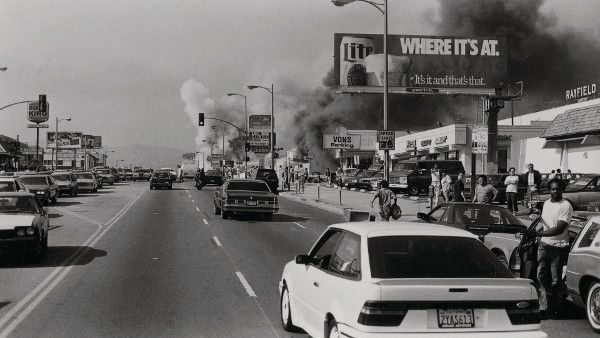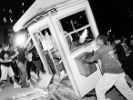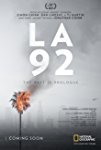Eye For Film >> Movies >> LA 92 (2017) Film Review
LA 92
Reviewed by: Jennie Kermode

The second of this year's two major documentaries on the riots that took place in Los Angeles following the acquittal of the police officers who beat Rodney King, LA 92 opened just one week after Let It Fall. It takes a very different approach from that film, aiming for the heart more than the head, which is not to say that it is less valuable as a piece of cinema - in fact, the two make good companion pieces. LA 92 is more accessible and wastes little time on preamble. It is assumed that the viewer will already know the outline of events, which is set out in peremptory fashion. We are quickly immersed in the action.
The focus here is on archive material. Key scenes - lines of armed police marching towards crowds, a white man pulled from his truck and beaten - will already be familiar to viewers who were of news-watching age at the time, but there is a great deal of more obscure footage here, providing new perspectives or opening up topics less often discussed. One particularly interesting section follows people resident in the areas where the riots took place, following their efforts to reach their homes or do their shopping unmolested. The fact that people lived in these areas is something at once obvious and frequently overlooked, and focusing on it emphasises the divided nature of America, the world of difference between the urban spaces of the poor and the suburbs where the middle classes watched the riots unfurl on television.

Unlike Let It Fall, LA 92 is as interested in class as it is in race. The racist aspects of the situation perhaps don't need too much additional emphasis; the early footage speaks for itself. Later, the footage shown shows mixed race crowds standing against the police,. This adds a different character to the established narrative and problematises the common assertion that black Los Angeles residents were universally angry at anyone white.
There is a strong emphasis here on the emotional impact of what was going on - the beating, the trial, the riots themselves, the police response. Rolling news was fairly new at the time and new techniques were being tried, so it's interesting to see how fresh the footage looks - one could walk in halfway through this film when it was playing on the mall screen and believe one were watching events unfolding today, which also, of course, serves to emphasise that the bigger issues behind the riots have not gone away. The cumulative effect of all this footage is powerful in recapturing the mood of the time. Although the archive material is inevitably uneven, especially as viewers will form very different personal connections with it, it is, overall, very effective. LA 92 feels like a journey back in time, albeit all too much like today.
Reviewed on: 08 Dec 2017

















